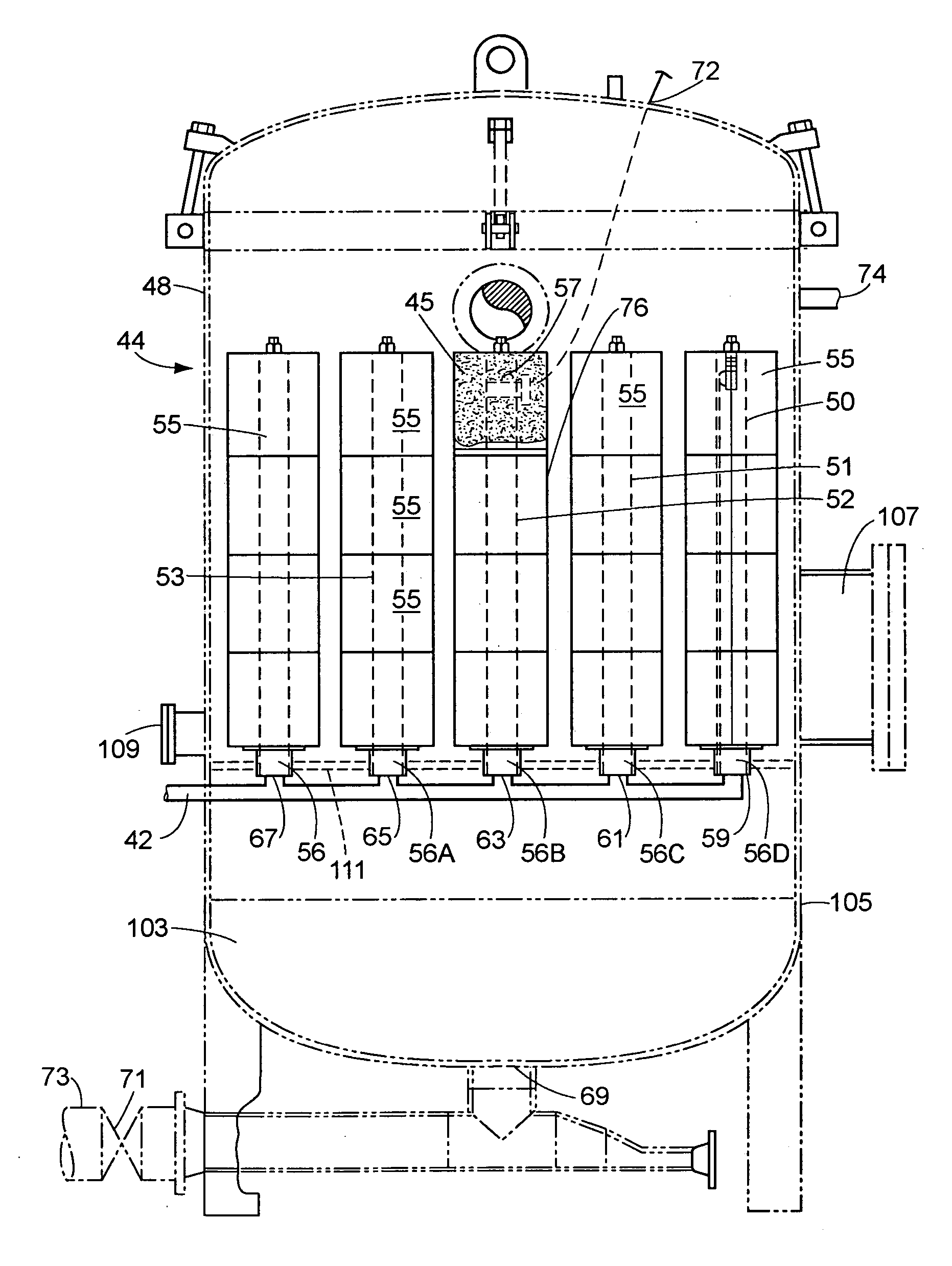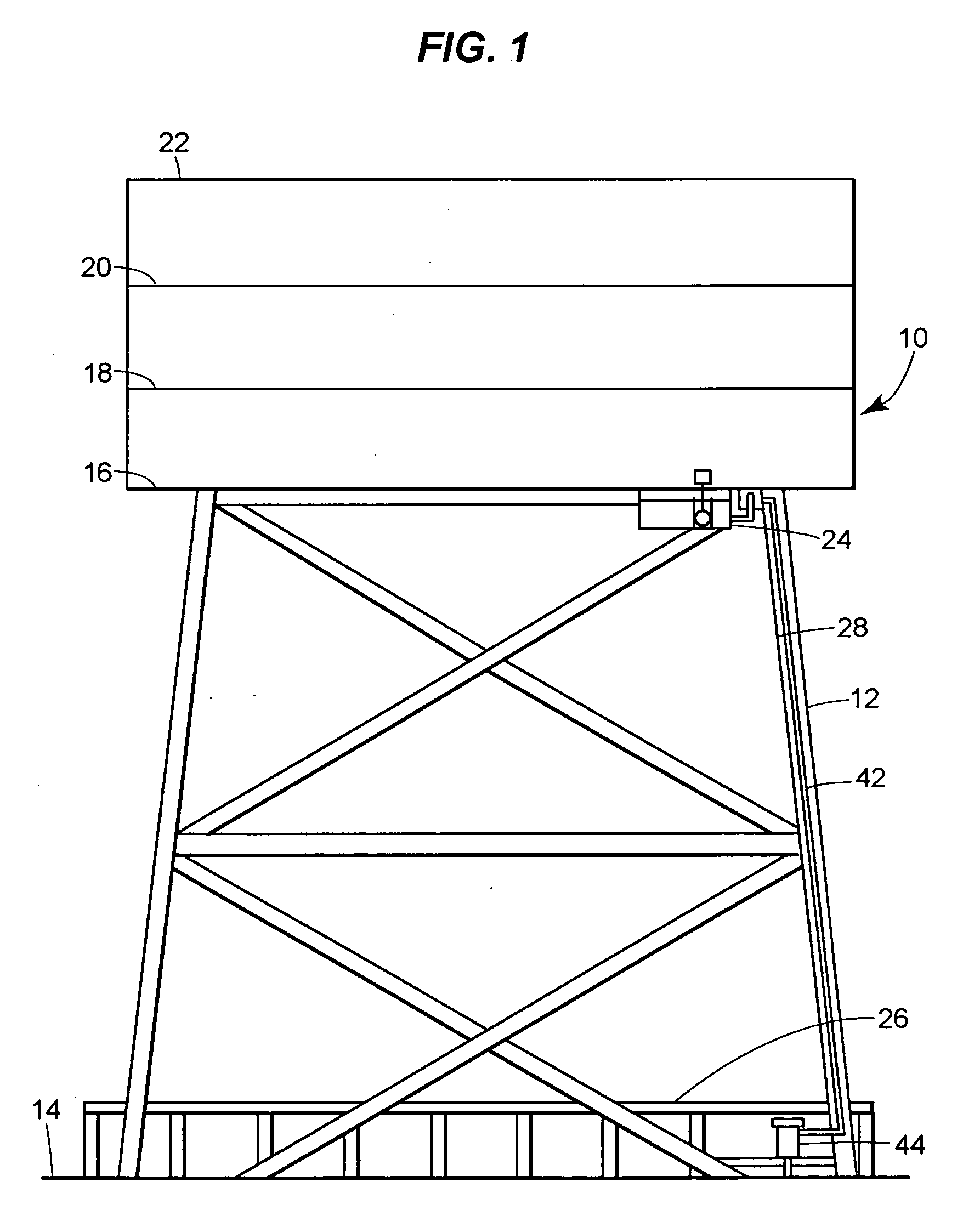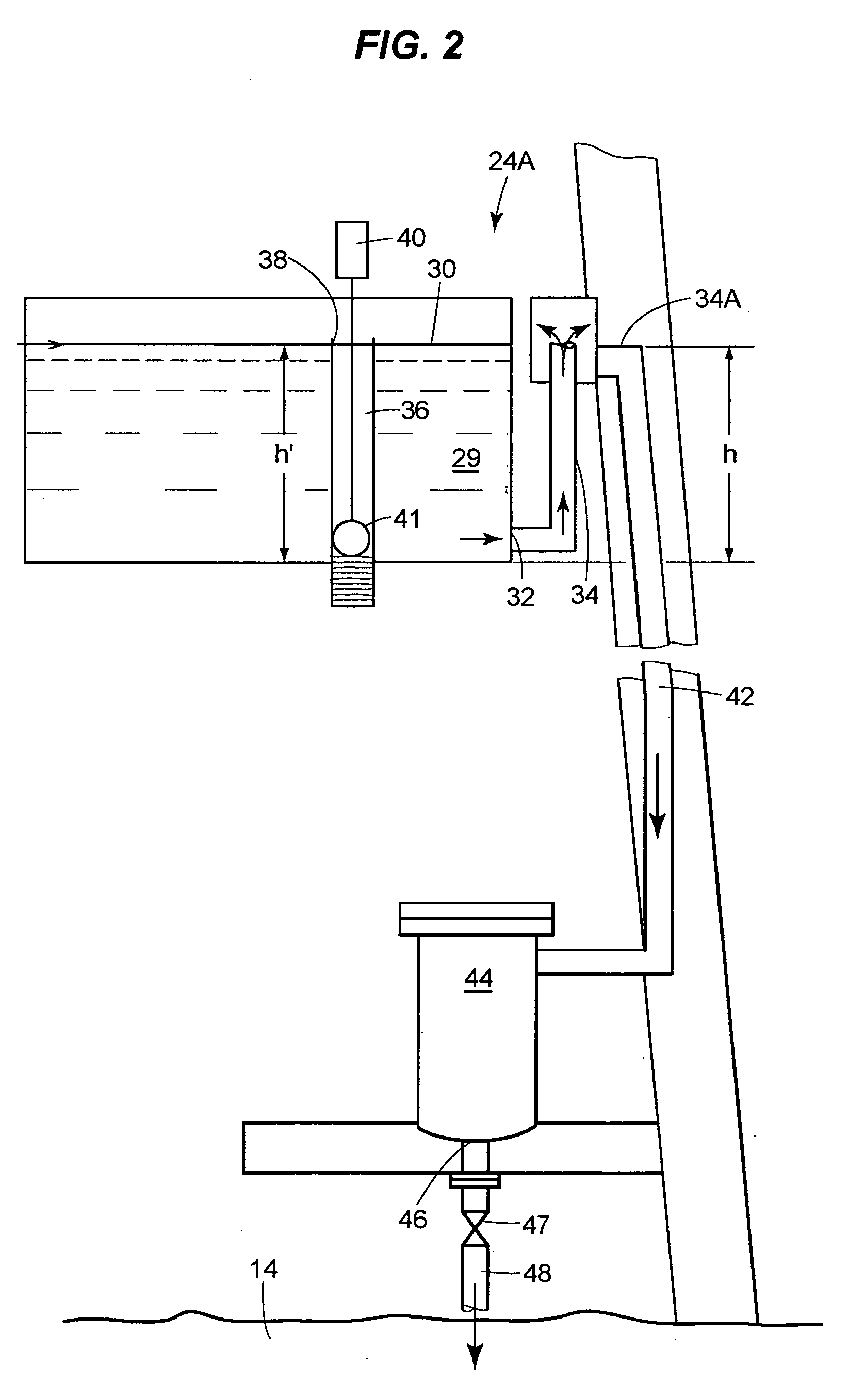Method for removing oil from water coalescing in a polymer particle/fiber media
a technology of polymer particles and fiber media, which is applied in water/sewage treatment, ion exchange, separation processes, etc., can solve the problems of oil, grease and other hydrocarbons unavoidably spilling onto the deck area, and the surface of the ocean is swollen and contaminated, and achieves high liquid flow rate
- Summary
- Abstract
- Description
- Claims
- Application Information
AI Technical Summary
Benefits of technology
Problems solved by technology
Method used
Image
Examples
Embodiment Construction
[0031] Turning now to the drawings, and initially to FIG. 1, there is shown an offshore drilling platform generally designated by reference numeral 10 including a work deck support structure 12 for supporting a plurality of stacked work decks at a substantial height above an ocean water level 14. The work decks commonly include a cellar deck 16 at a lowest work deck level, a second deck 18 located directly above the cellar deck 16, a third deck 20 disposed directly above deck 18, and a main deck 22 at an uppermost work deck level. In extant offshore drilling platforms, a sump tank 24 has been connected to the drilling platform 10 at the cellar deck level 16 and rainwater, including entrained hydrocarbons, particularly oil, paraffins and surfactants have been directed from all deck levels, which are contained so that rainwater and entrained hydrocarbons do not spill over to the ocean, to drain by gravity into the sump tank 24. It has been found that further separation of hydrocarbons...
PUM
| Property | Measurement | Unit |
|---|---|---|
| particle size | aaaaa | aaaaa |
| density | aaaaa | aaaaa |
| particle size | aaaaa | aaaaa |
Abstract
Description
Claims
Application Information
 Login to View More
Login to View More - R&D
- Intellectual Property
- Life Sciences
- Materials
- Tech Scout
- Unparalleled Data Quality
- Higher Quality Content
- 60% Fewer Hallucinations
Browse by: Latest US Patents, China's latest patents, Technical Efficacy Thesaurus, Application Domain, Technology Topic, Popular Technical Reports.
© 2025 PatSnap. All rights reserved.Legal|Privacy policy|Modern Slavery Act Transparency Statement|Sitemap|About US| Contact US: help@patsnap.com



